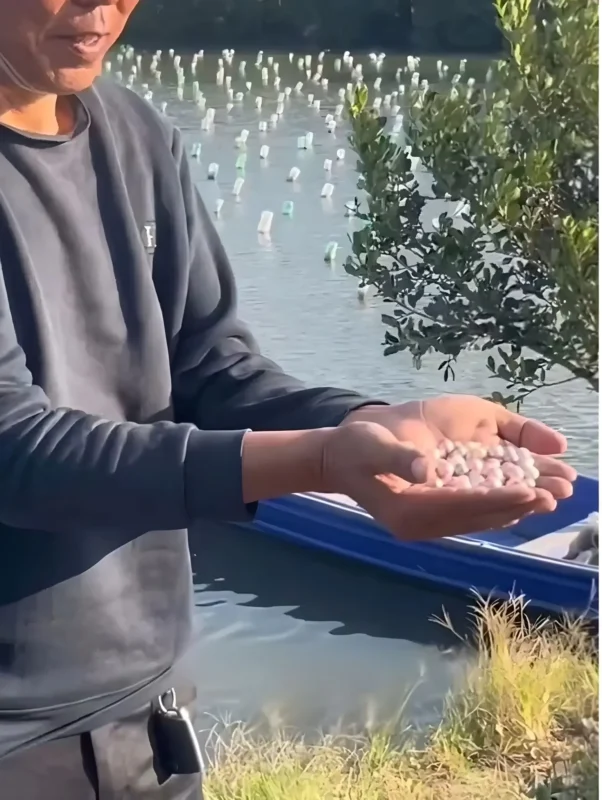Where Pearl Is Found? Discover the Mystique Behind Nature’s Lustrous Gems

Have you ever found yourself gazing at a lustrous pearl necklace and pondered, “Where are pearls found?” Pearls capture our imagination with their iridescent beauty, but their origins are often shrouded in mystery. Delving into the fascinating world of pearl production reveals both the natural wonders and challenges faced in harnessing these oceanic treasures. Join us on this immersive journey as we explore the captivating origins of pearls, their geological homes, and the diverse marine environments where they thrive.

The Birthplace of Pearls: Oceans, Lakes, and Rivers
When we think of pearls, the first image that comes to mind might be the vast and mysterious ocean. Indeed, pearls are primarily found in saltwater bodies, with the most revered sources being the Indian Ocean, the Persian Gulf, and the coastal waters of Australia. Natural pearls form in mollusks—both oysters and mussels—when an irritant becomes trapped inside the shell. Over time, layers of nacre envelop the intruder, creating a radiant pearl. The warm waters and nutrient-rich environments of these regions create perfect conditions for pearl formation. You can learn more about the unique properties of these regions from GIA.edu.
However, not all pearls hail from the depths of the sea. Freshwater pearls, cultivated in lakes and rivers, predominantly originate from China, which accounts for the bulk of the world’s freshwater pearl production. These ecosystems provide a unique nutrient composition that contributes to the lustrous allure of freshwater pearls. “With their subtle hues and distinctive shapes, freshwater pearls offer a different charm,” says renowned gemologist Dr. Mei Ling. Additional insights into freshwater pearls can be found on Pearls.com.
Cultivation and Harvesting: The Art of Pearl Farming
While natural pearls are rare and often costly, modern techniques have allowed for the cultivation of pearls, known as cultured pearls, which cater to global demand. Japan, known for pioneering pearl farming, introduced Mikimoto pearls over a century ago. These pearls are carefully cultured in oysters, with skilled technicians implanting a nucleus and ensuring optimal conditions for growth. For more about the history of cultured pearls, check out Mikimoto’s official site.
Cultivated pearls are not isolated to Japan; the practice has spread across the globe, with significant production in Australia, China, and French Polynesia. In these regions, pearl farming is not only an art but also an economic lifeline. According to the Gemological Institute of America, “Pearl farming is a delicate balance of human ingenuity and respect for natural processes.”
The Environmental Considerations: Navigating Challenges in Pearl Production
Pearls are synonymous with elegance and luxury, yet their production poses environmental challenges. Overfishing, pollution, and climate change threaten the delicate ecosystems that pearls call home. Sustainable pearl farming practices are increasingly important to mitigate these issues, with many pearl farms adopting eco-friendly methods to minimize impact on marine habitats.
Balancing the demand for pearls with environmental responsibility is a challenge shared by both artisans and consumers. Supporting sustainable practices not only ensures the continued availability of these gems but also preserves the beauty of our oceans for future generations.
Conclusion: The Journey from Ocean to Ornament
In unraveling the enigmatic origins of pearls, we find a story that is as deep and multifaceted as the gems themselves. Whether sourced from the azure lagoons of French Polynesia or the tranquil rivers of China, pearls are a testament to the beauty and complexity of nature. As consumers and admirers of these gems, understanding where pearls are found enriches our appreciation for their intricate journey and enhances the allure of owning a piece of this natural wonder.
In our quest for elegance and sophistication, let us also embrace responsible choices that honor the incredible environments from which pearls emerge. Next time you clasp that string of pearls around your neck, remember the journey it has taken—from the heart of the ocean to the palm of your hand—and let its lustrous glow remind you of nature’s timeless artistry.
